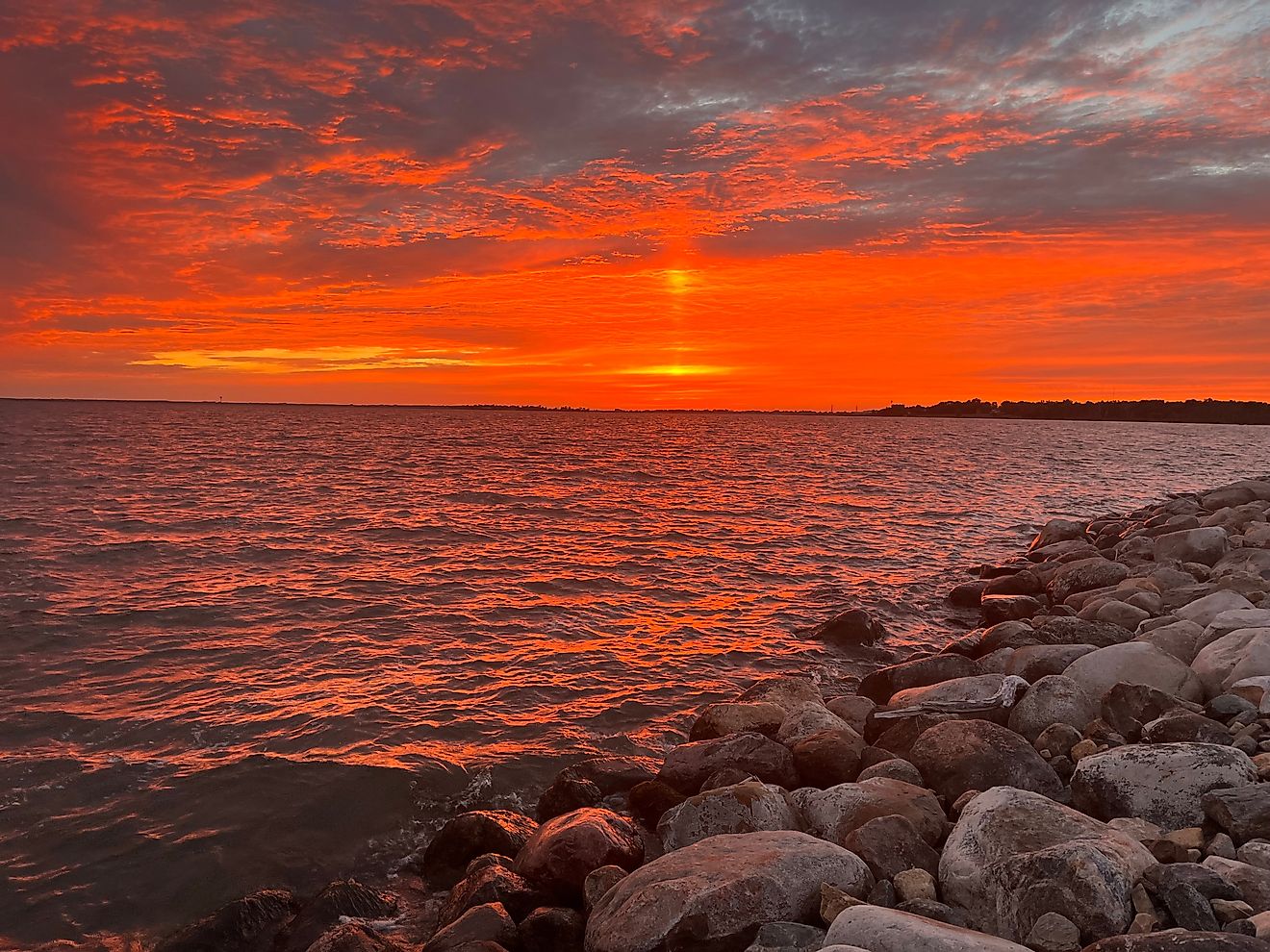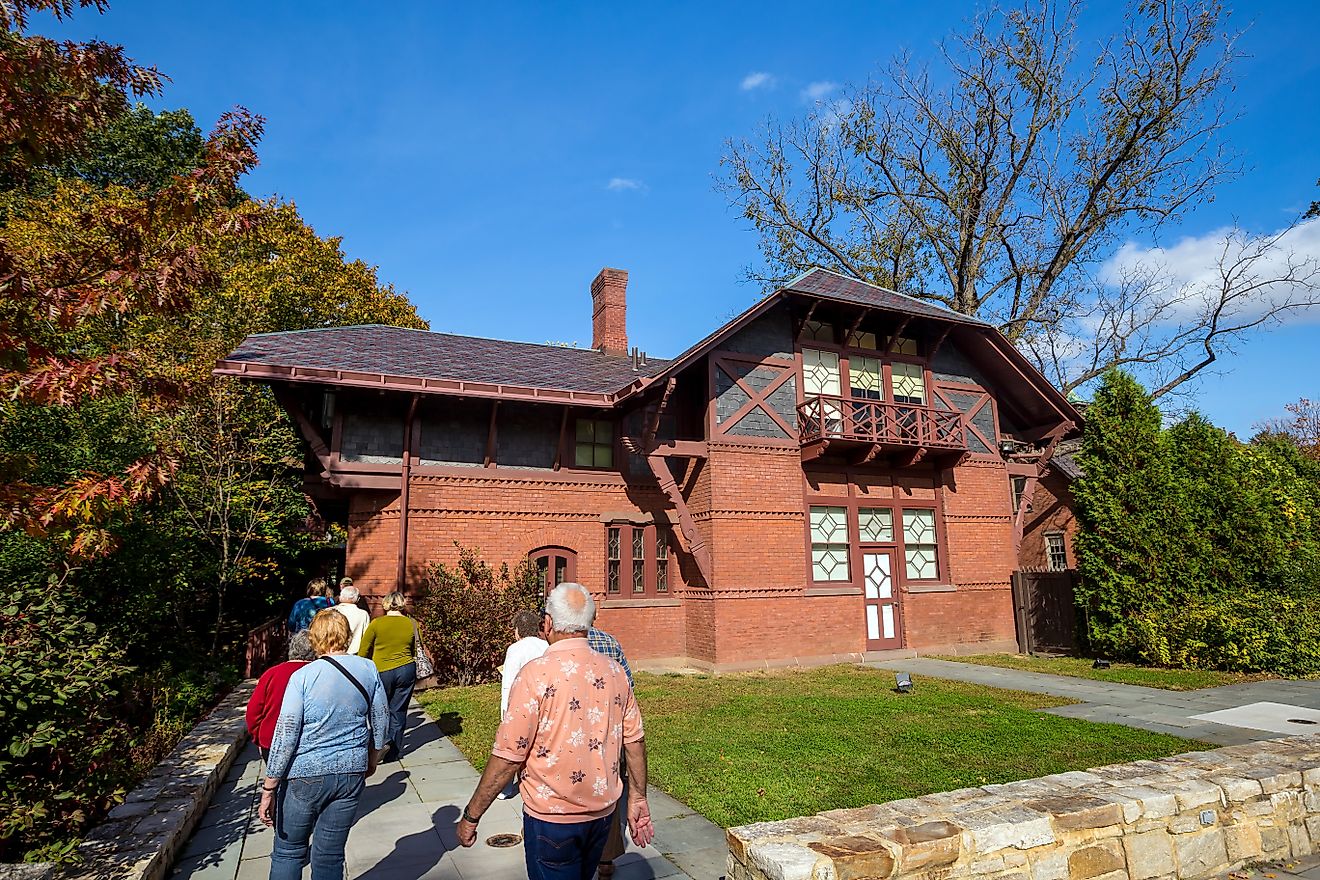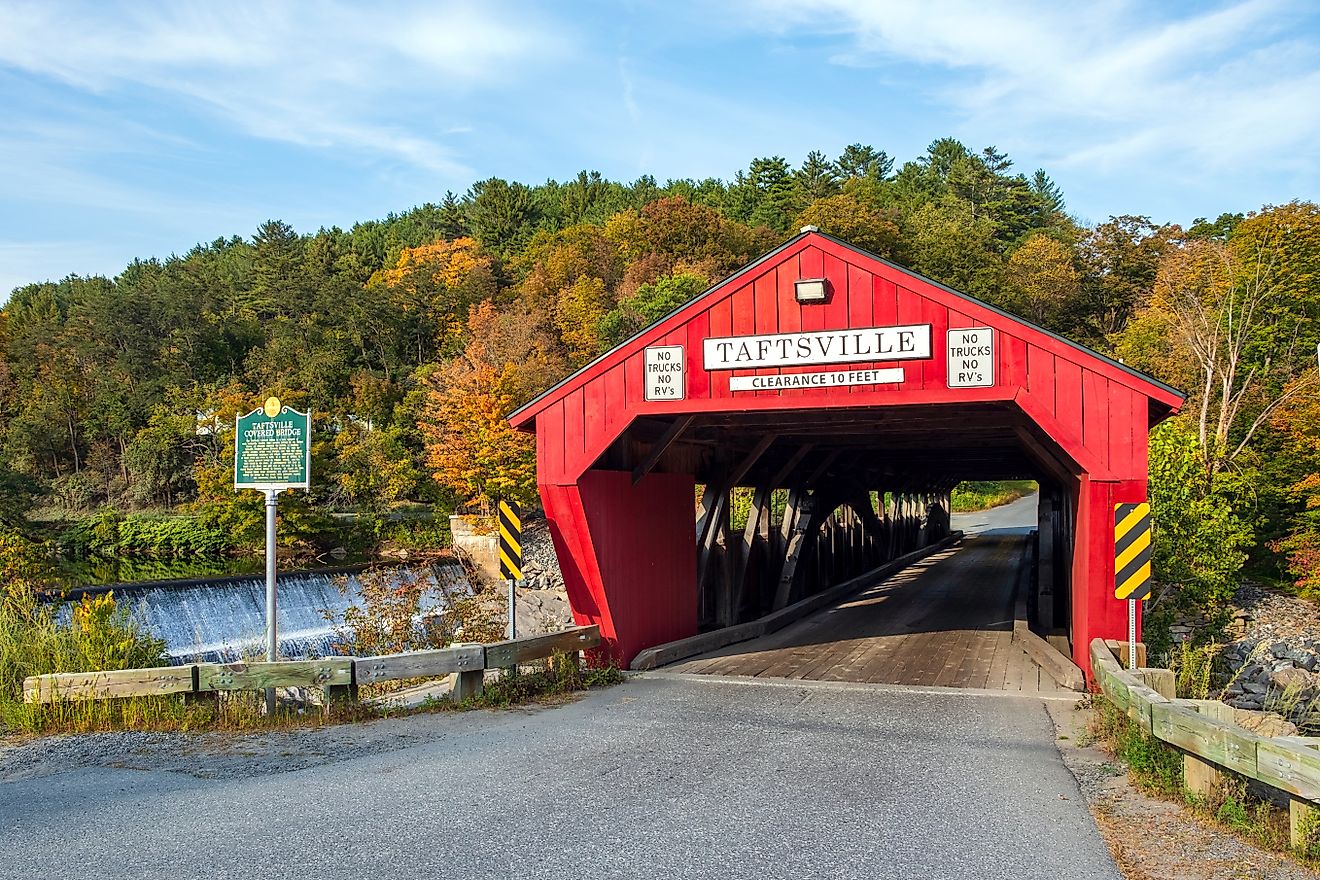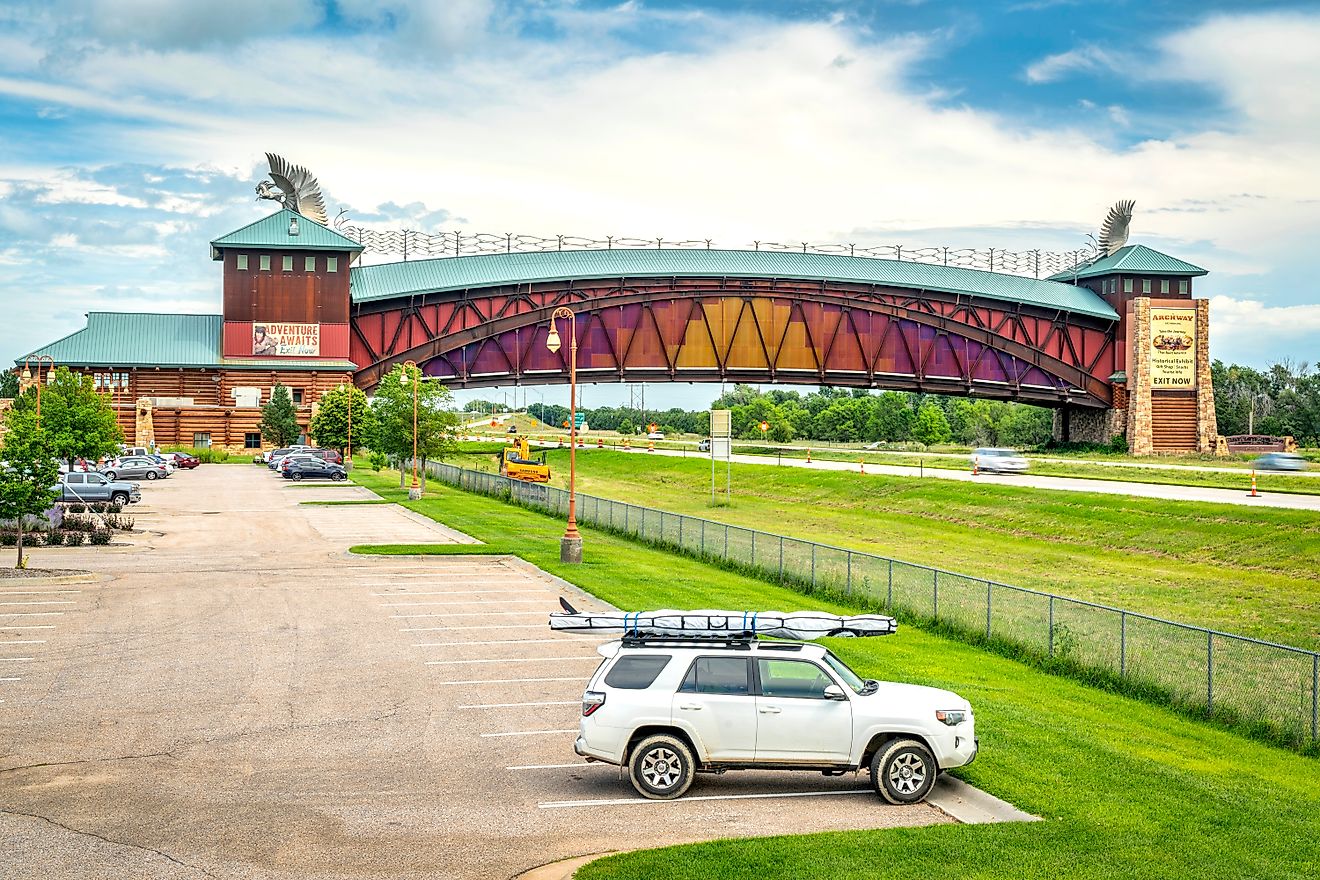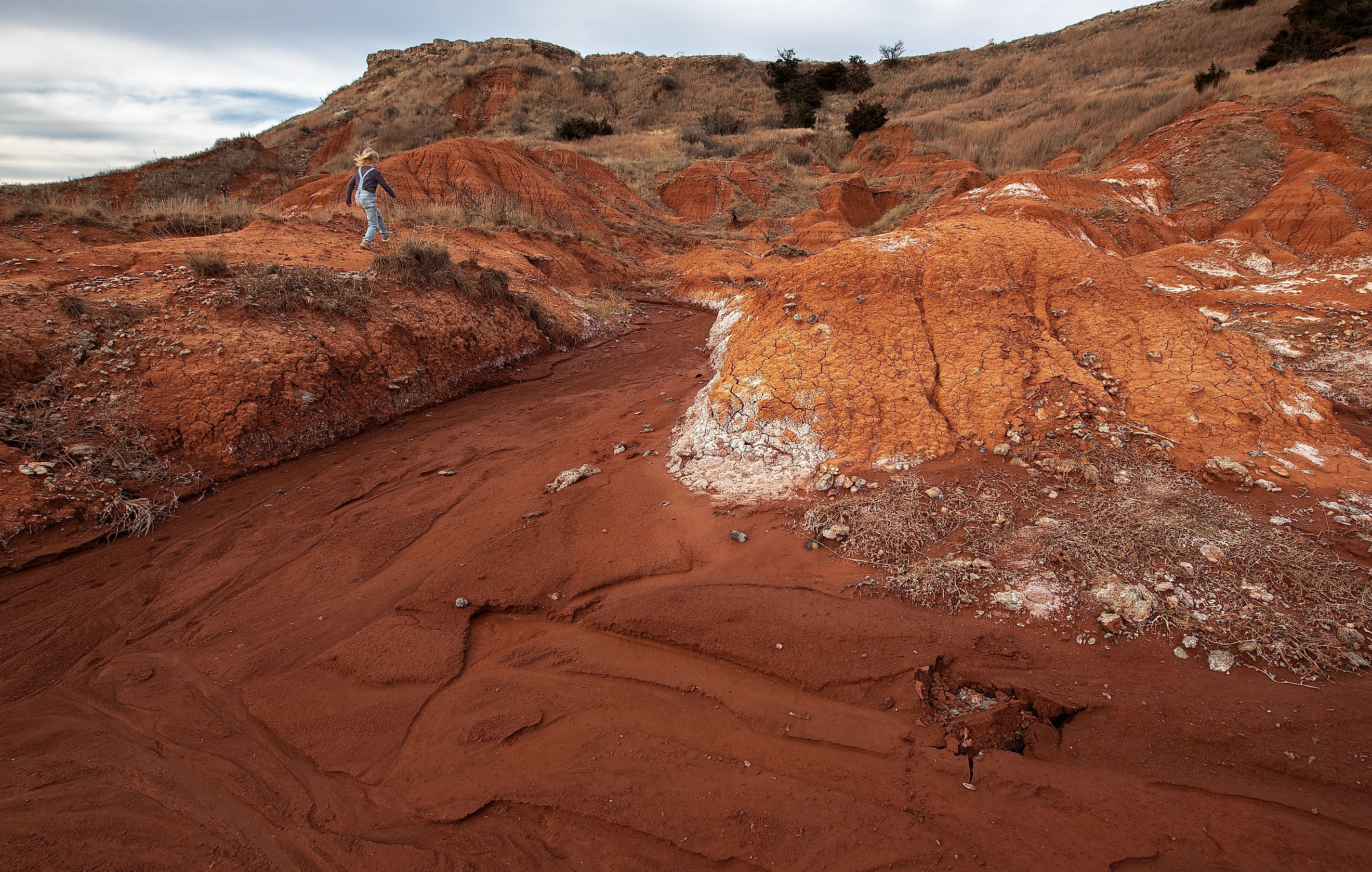
6 Most Rattlesnake Infested Areas in Oklahoma
More than 40 species of snakes are found in Oklahoma, including five species of rattlesnakes typically found in regions with rocky terrain, grasslands, and woodlands: the timber rattlesnake (Crotalus horridus), western diamondback rattlesnake (Crotalus atrox), western massasauga rattlesnake (Sistrurus tergeminus), western pygmy rattlesnake (Sistrurus miliarius streckeri), and prairie rattlesnake (Crotalus viridis). Annually, about 7,000 people to 8,000 people are bitten by venomous snakes in the U.S., though the likelihood varies state by state. North Carolina has the highest incidence of snake bites, followed by West Virginia and Arkansas. Oklahoma ranks fourth in the United States. Despite the incidence of bites, rattlesnakes do not tend to bite unless they feel threatened or provoked, as they primarily use their venom for hunting rather than self-defense. Still, visitors to the Sooner State should practice common sense when exploring the six most rattlesnake-infested areas in Oklahoma.
Wichita Mountains Wildlife Refuge
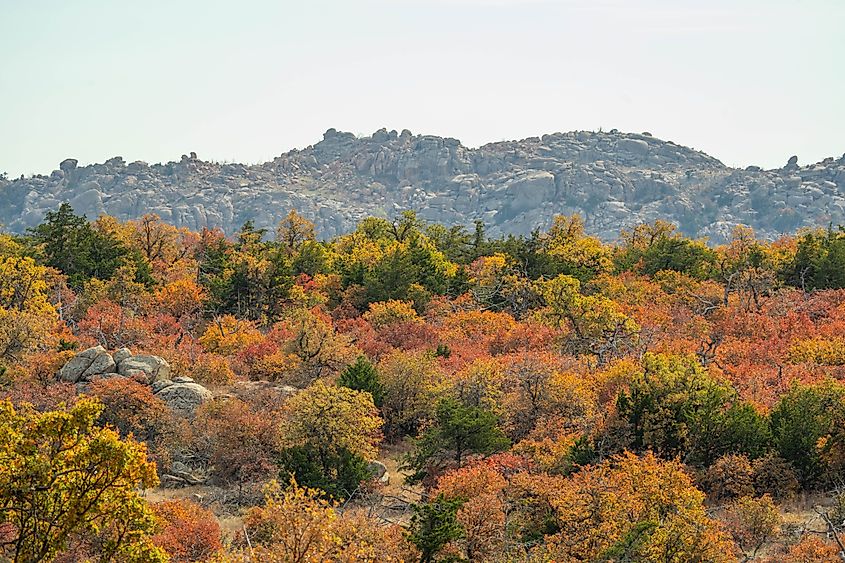
Located in southwestern Oklahoma, the Wichita Mountains Wildlife Refuge near Medicine Park is a must-see destination for hikers, wildlife enthusiasts, and photographers. The refuge spans 59,000 acres and is home to wildlife from tiny prairie dogs, elk, white-tailed deer, and Texas longhorn cattle to the stars of the refuge’s conservation efforts, a large herd of free-roaming American bison. The refuge provides ideal rocky habitats for rattlesnakes, who use the ledges to bask in the sun and the crevices as shelters. Hikers in this region should stay alert when traversing trails. The refuge lists three species of rattlesnakes in the park: the timber rattlesnake, the Western diamondback rattlesnake, and the prairie rattlesnake.
Gloss Mountain State Park
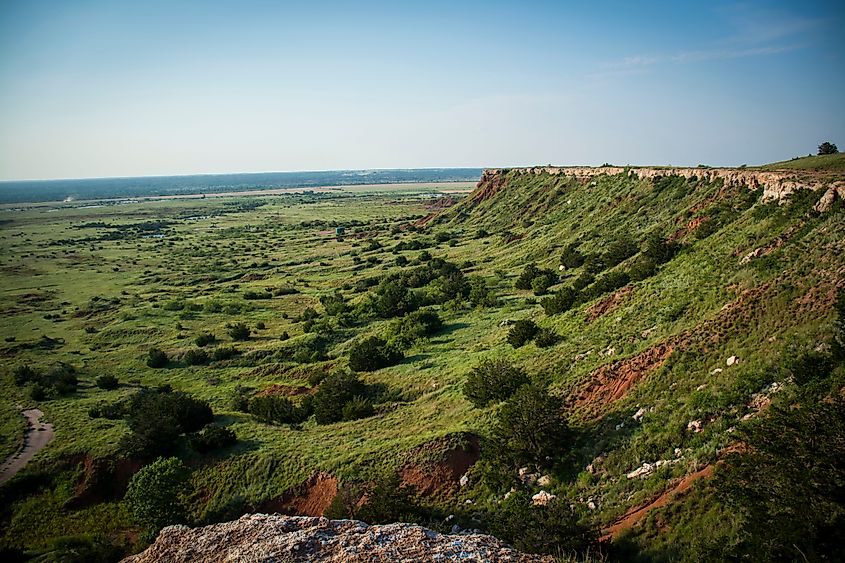
Gloss Mountain State Park is in northwestern Oklahoma. It's home to the Gloss Mountains — sometimes called the Glass Mountains, thanks to the high selenite content that imitates a shiny glass mirror. Encompassing 640 acres, the park's most popular activity is hiking up Cathedral Mountain, where the trail traverses the expansive mesa. From the top of the mountain, which resembles the flat top of a table, hikers are rewarded with a spectacular view of the valley floor and nearby Lone Peak Mountain, which is the tallest of the mesas and buttes that make up the park. There is always the opportunity to see wildlife in the park, like lizards (called mountain boomers), turkey vultures, black-tailed jackrabbits, and prairie rattlesnakes, who are attracted by the park’s mesas and dry environment.
Tallgrass Prairie Preserve
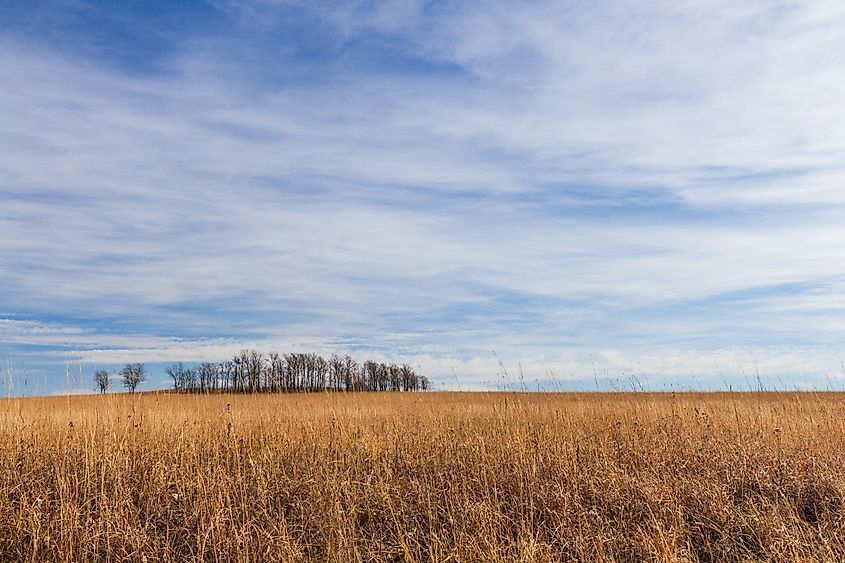
In northeastern Oklahoma, the Joseph H. Williams Tallgrass Prairie Preserve is the largest protected area of tallgrass prairie in the world, encompassing 39,650 acres. Once the tallgrass prairie ecosystem covered over 142 million acres across North America and spanned 14 states from Texas to Minnesota, less than 4% remains due to agriculture development and urbanization. Today, the prairie is a top destination for wildlife enthusiasts, nature lovers, and photographers who travel to see the more than 2,000-strong herd of free-ranging bison, over 700 plants, 300 birds, and 80 mammals that make their home on the prairie. Visitors can take a 15-mile bison driving loop to see the shaggy majestic bison or park the car and take the two-mile Prairie Earth Trail hike through the preserve. The tall grasses are the perfect hiding place for prairie rattlesnakes and Western Massasaugas, so hikers should be alert for their distinctive rattling sounds.
Black Mesa State Park
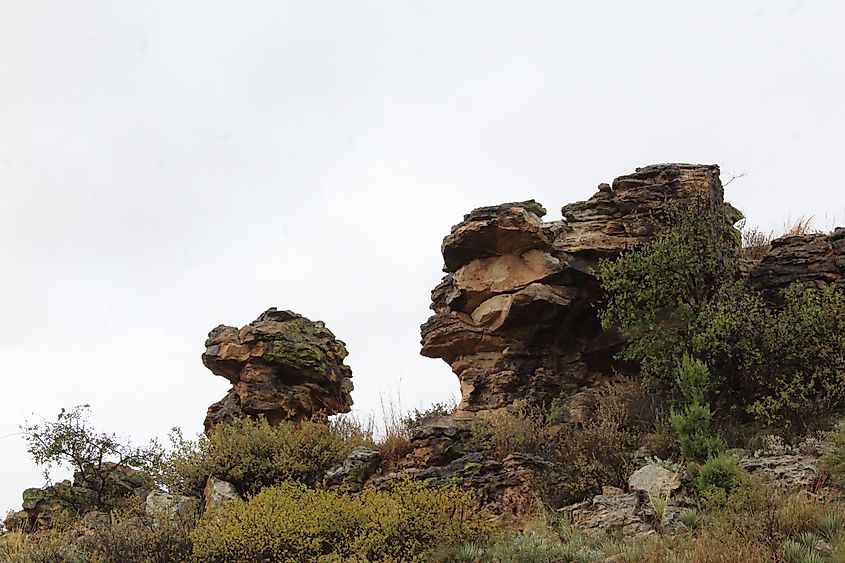
In the Oklahoma Panhandle along the tri-state border with Texas, Colorado, and New Mexico, Black Mesa State Park gets its name from the layer of black lava rock that covered the mesa over 30 million years ago. The 1,600-acre park features the namesake Black Mesa, the highest point in the state at 4,973 feet. Full of prairie, juniper, and cactus, the remote region of Oklahoma presents hikers with trails of varying lengths and difficulties. It is about an 8.5-mile hike to the top of Black Mesa, so adventurous outdoor enthusiasts should be prepared for three hours to five hours of hiking with little to no shade. Hikers should also watch out for rattlesnakes, especially at night, as the park is a hotspot for prairie rattlesnakes due to its semi-arid, rocky terrain.
Great Plains State Park
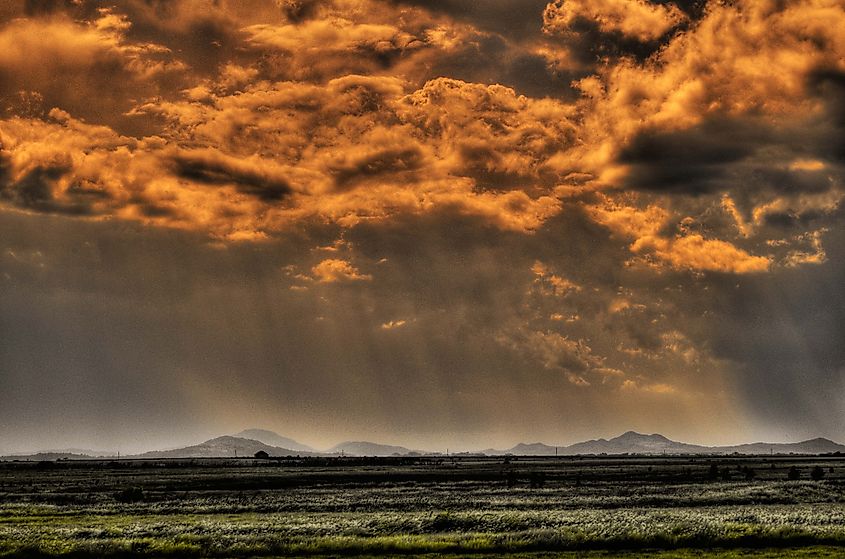
Great Plains State Park is the perfect destination to explore Oklahoma’s diverse landscape, with a unique blend of rugged mountains, sprawling grasslands, and pretty lakes. Located in southwestern Oklahoma near the Wichita Mountains, there are hiking, biking, and plenty of campsites surrounded by breathtaking views. With 31 miles of shoreline along the 6,400-acre Tom Steed Reservoir, anglers can fish for catfish, bass, and crappie, while sailors can launch boats for a day of paddling or water skiing. Rock climbing in the granite boulder fields is also a favorite pastime in the park. History buffs can explore the remnants of the 1904 Gold Bells Mill and Mine but should use caution as rattlesnakes are known to inhabit the abandoned mine.
Lake Eufaula
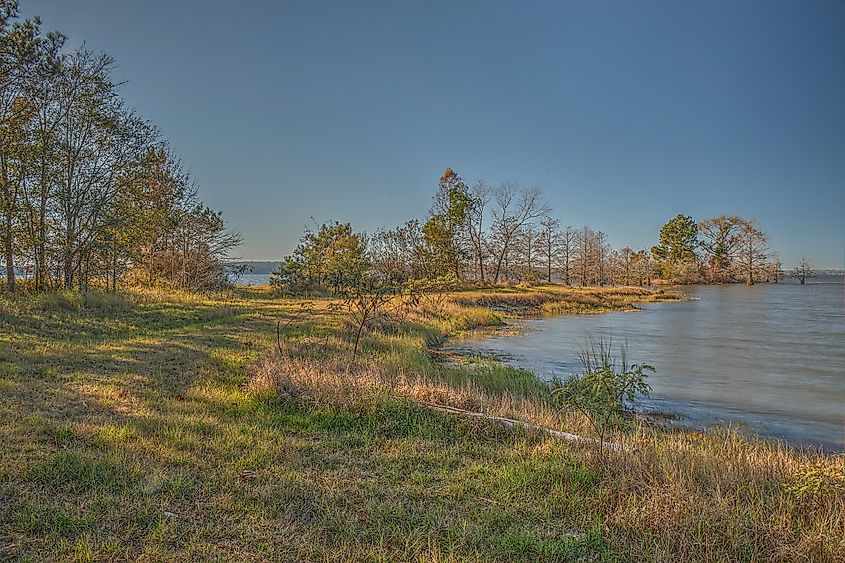
A top fishing destination about two hours from the state capital of Oklahoma City, Lake Eufaula is the largest lake in the state, with over 800 miles of shoreline, attracting close to 2.5 million visitors annually. There are plenty of opportunities for outdoor activity at the lake, which is the centerpiece of the Lake Eufaula State Park, including boating, waterskiing, fishing, and swimming. The lake is included on several lists of snake-infested lakes in the state, and there have been numerous rattlesnake sightings in and around the lake’s marshy shores. Recently, a dog was killed by a Western diamondback rattlesnake in a resort community on Lake Eufaula.
Oklahoma's diverse geography, from rocky mountains to expansive prairies and desert-like mesas, provides ideal habitats for rattlesnakes. The Wichita Mountains Wildlife Refuge and Black Mesa State Park offer rocky, sunlit ledges perfect for rattlesnakes to bask on, while the grasses of the Tallgrass Prairie Preserve hide species like the prairie rattlesnake. The dry, open landscapes of Gloss Mountain State Park and Great Plains State Park further attract rattlesnakes, making the state a prime destination for both outdoor enthusiasts and wildlife observers in these six most-rattlesnake-infested areas of Oklahoma.

